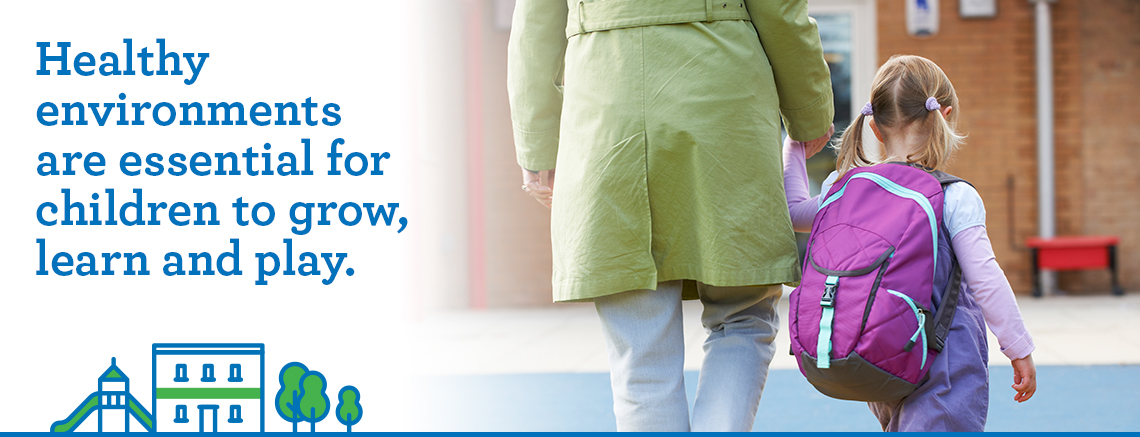Epidemiology: Occupational and Environmental
Choose Safe Places: Guide for Parents

As a parent, you want your child to grow, learn, and play in a healthy environment. This includes protecting them from harmful chemicals that might be in the air, water, soil, and dust. Many children spend large amounts of time in child care facilities, making it important to ensure these spaces are safe from harmful substances.
Why is it important?
Did you know that children are more at risk from exposures to harmful substances than adults? Children drink more water and breathe more air relative to their body size than adults do. Additionally, behaviors that are common in children, such as crawling or hand-to-mouth, can expose them to more chemicals. Because children are still growing and developing, exposures to harmful substances can have long-term impacts.
What can child care providers do to protect children?
The North Carolina Department of Health and Human Services (NCDHHS) requires every licensed child care center to comply with health and safety regulations. Some of these reduce chemical exposures, like restrictions on the use and storage of pesticides and testing of drinking and cooking water for lead.
The NCDHHS voluntary Choose Safe Places (CSP) program builds on these protections. The CSP program is a new initiative to protect children from harmful exposures to chemicals while attending child care centers. The CSP program works with child care providers to ensure child care centers are free of harmful substances, such as lead, arsenic, or volatile organic compounds.
What does Choose Safe Places do?
The CSP program focuses on four key elements important for an environmentally safe child care location. Child care providers can evaluate a child care location using the CSP property checklist. This includes questions about:
- Former uses of the site that might have left harmful substances: Not all past site use will present a problem for child care locations. Identifying sites with a problematic past use that might produce harmful substances is critical to protecting children.
- Movement of harmful substances from nearby properties: Contamination can come from a source nearby, such as a gas station or dry cleaner, and move onto the child care site through air, water, or soil.
- Presence of naturally occurring harmful substances: Naturally occurring contamination, such as arsenic or radon in soil or groundwater, can be as hazardous as contamination from human activities.
- Access to safe drinking water: Clean drinking water is essential for children’s health. Drinking water can get contaminated through various sources and activities, such as old plumbing or use of fertilizers.
As a parent, how can you help?
When you are visiting and choosing a child care center, look for a clean, safe environment. Here are a few questions you can ask.
- If the building was built before 1978, has it been inspected for lead paint?
- Have they tested for lead in all taps used for drinking and cooking? If they have a private well, has it been tested?
- Has anyone conducted an environmental assessment on the property? If the assessment found any problems, have they been corrected?
- Have they tested for radon? What were the results?
- Has the child care center participated in the Choose Safe Places program? The center may have a certificate or window cling displayed recognizing their participation.
You can learn more about Choose Safe Places by contacting the Occupational & Environmental Epidemiology Branch at (919) 707-5900 or nchace@dhhs.nc.gov.
For more information about child care in North Carolina, visit https://ncchildcare.ncdhhs.gov/.
If you need help finding quality child care services in your area, you can contact your Child Care Resource & Referral Agency.
For information about steps to take at home to address environmental concerns, visit North Carolina Healthy Homes.
Last Modified: July 25, 2023
